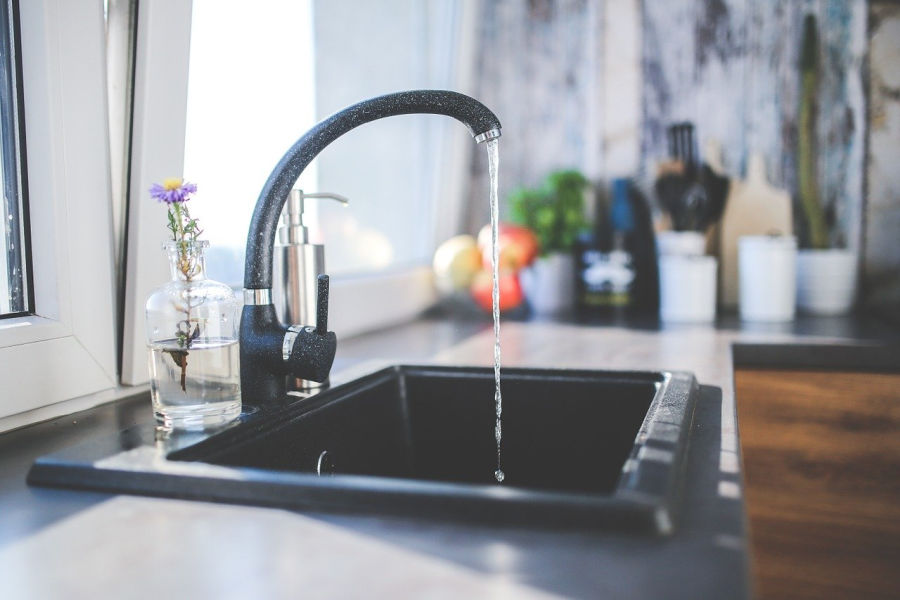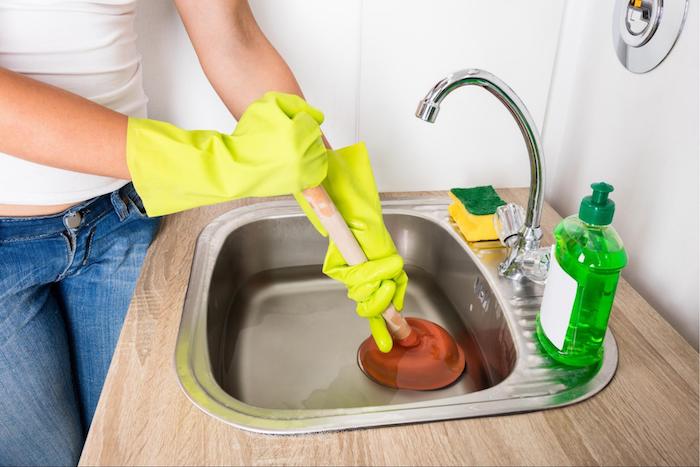The Trouble Down Under - 6 Reasons For Your Kitchen Sink's Drainage Difficulties
The Trouble Down Under - 6 Reasons For Your Kitchen Sink's Drainage Difficulties
Blog Article
The article down below involving Five Ways to Fix a Slow Sink Drain is fairly remarkable. Don't skip it.

It's not normal for your cooking area sink to clog up several times in one month. If your sink obstructs twice a week, there's some problem going on.
A blocked cooking area drain doesn't simply slow down your tasks, it deteriorates your whole plumbing system, little by little. Right here are some usual practices that urge sink clogs, and exactly how to prevent them.
You need appropriate garbage disposal
Reusing waste is terrific, yet do you pay attention to your organic waste as well? Your cooking area should have two different waste boxes; one for recyclable plastics and also another for organic waste, which can end up being garden compost.
Having actually a designated trash bag will certainly aid you and also your family prevent throwing pasta as well as other food remnants down the tubes. Normally, these residues take in wetness as well as end up being obstructions.
The mistake isn't from your cooking area sink in any way
Possibly the trouble isn't from your cooking area sink, however the whole drain system. In such a situation, you may discover that other sinks as well as drains get clogged every other week. You need a professional plumbing service to repair this.
You're tossing coffee down the tubes
Used coffee grounds and also coffee beans still soak up a considerable amount of dampness. They might seem tiny enough to throw down the drainpipe, however as time goes on they begin to swell as well as take up more room.
Your coffee premises must enter into organic waste disposal. Whatever fraction runs away (probably while you're depleting) will be looked after during your month-to-month clean-up.
You've been eating a great deal of oily foods
Your kitchen area sink may still get obstructed despite organic waste disposal. This might be since you have a diet plan rich in oily foods like cheeseburgers.
This oil coats the insides of pipelines, making them narrower as well as more clog-prone.
Make use of a bettor
Your pipeline had not been repaired properly to begin with
If you've been doing none of the above, but still obtain routine blockages in your kitchen sink, you should certainly call a plumber. There may be an issue with how your pipelines were set up.
While your plumber arrives, look for any leakages or abnormalities around your kitchen pipelines. Don't attempt to take care of the pipes on your own. This may cause a mishap or a kitchen flooding.
Someone attempted to wash their hair in the kitchen sink
There's a correct time and area for whatever. The cooking area sink is simply not the ideal place to clean your hair. Washing your hair in the kitchen area sink will make it block sooner or later unless you make use of a drain catcher.
While a drainpipe catcher might capture most of the results, some strands may still survive. If you have thick hair, this may suffice to reduce your drainage as well as at some point form a blockage.
There's even more dirt than your pipelines can take care of
If you get fruits straight from a ranch, you may discover even more kitchen dirt than other individuals that go shopping from a mall. You can quickly repair this by cleansing the fruits and veggies appropriately prior to bringing them into the house.You require proper garbage disposal
My Kitchen Sink Won’t Drain - What Should I Do?
If Your Sink Has a Garbage Disposal...
Turn on the disposal. If the disposal hums and doesn’t turn, then there’s clog in the disposal unit.
Go to your circuit breaker panel, and switch off the circuit breaker to your garbage disposal.
Back in your kitchen, double-check that your garbage disposal is off by trying to turn it on. The disposal should not move, and it should not make any noise.
Lie down underneath your sink so that you can see and access the bottom of the disposal unit. Look for a hole that looks like the head of a hex-head bolt in the center of the unit.
Place an Allen wrench inside this hole and turn it from side to side until you feel a decrease in resistance and are able to rotate the wrench completely in a single direction. This action rotates your disposal’s blade manually.
Put the wrench aside, and press the disposal unit’s reset button or switch.
Flip your garbage disposal’s circuit breaker switch back on, and turn on the unit to see if the obstruction has cleared. If it hasn’t, repeat the steps above until the obstruction is removed.
How to Unclog a Kitchen Sink Drain
If you have a double bowl sink, seal one side of the sink with an airtight lid or a second plunger before plunging the other side. Otherwise, you won’t be able to create adequate suction.
Place the cup of the plunger completely over the drain opening.
Turn on the faucet, and let the water run until it completely covers the cup of the plunger.
Start plunging by pushing the plunger down and pulling up again in order to build up suction. Make sure that the edges of the plunger stay in contact with your sink, or else you’ll lose the suction.
If you have trouble forming a seal between your sink and plunger, add petroleum jelly to the mouth of your plunger, and try again.
Plunge about five or six times before removing the plunger to see if water starts to drain properly. In some cases, you’ll even be able to feel the clog become dislodged while you plunge because suddenly there will be much less resistance. Repeat the plunging process until the clog clears.
Once water is draining properly again, run hot water down the drain for 5 minutes to help clear away grease, grime, and debris from the clog. https://www.plumbingjoint.com/blog/2019/august/my-kitchen-sink-won-t-drain-what-should-i-do-/

My Kitchen Sink Won’t Drain - What Should I Do?
If Your Sink Has a Garbage Disposal...
How to Unclog a Kitchen Sink Drain
https://www.plumbingjoint.com/blog/2019/august/my-kitchen-sink-won-t-drain-what-should-i-do-/
I'm very interested in What To Do When Your Kitchen Sink Won’t Drain and I hope you enjoyed reading the new article. Liked our posting? Please share it. Let somebody else check it out. I treasure reading our article about Why Is My Sink Not Draining?.
Apply Now
Report this page